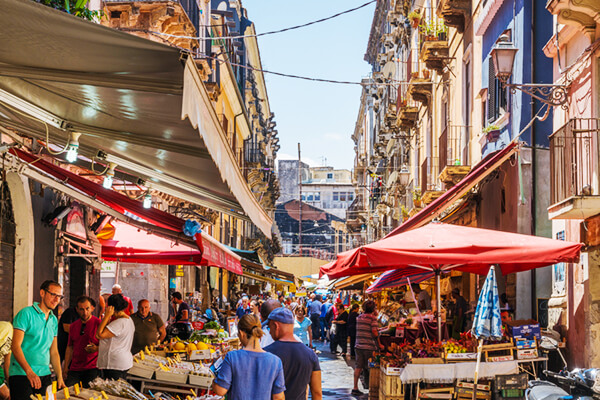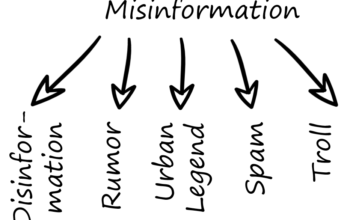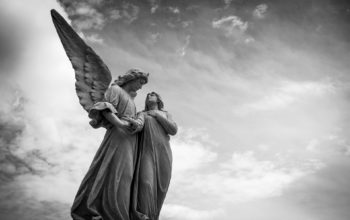The most common image of Europe in the eyes of foreigners is one of the perfect and beautiful old country, filled with art, culture, and technology. The most common image Sicily in the touristic guide is that of an island full of beauties and history, which is true but is just one part of the story. The ancient island from one century to the other is passed in the hands of many dominators: the Greeks, the Romans, the Arabs, the Germans, the French and so on. All we have now is a rich cultural and historical heritage that belong to different civilizations but in the same time one of the highest percentage of poverty and unemployment, which affects the whole territory, while the regional government is stuck in the mud of one of the highest public debts ever, around 13 billion euro.
In this environment the only big wheel of the regional economy is tourism, which is increased in the major cities in the last decade: Catania, Palermo, Messina, Siracusa, and Agrigento, are now crossed by billions of tourists every year. Catania, the city where I come from, I have seen a great development of the touristic sector, especially because of the unique combination of cheap and great food, seaside, Mount Etna, one of the tallest living volcano in Europe, just half hours away from the city, and one of the biggest airport in Italy.
The increasing of the touristic sector comported in the meantime a development and renewal of the city center, which was never extended to the many periphery neighborhoods of the city, probably because they never been in the interests of the touristic agency, restaurants and hotels, and politicians, all more concerned about the needs of the tourists than of the common citizens.
But where the institutional eye does not look, sometimes there are citizens fully engaged in the fight against poverty and social marginalization, trying to give hope and a new pattern of life to completely forgotten neighborhoods. There are several examples in my city that I could talk about, but today I want to talk about one of them, the case of “I Briganti di Librino” (translated “The Bandits of Librino”).
Librino is one the biggest neighborhood of Catania, built in the South-West area of the city, designed by on the most famous arch star, Kenzō Tange, during the ’70s, it should have been the Catania 2, a rich residential area for the new Catania of that time, which was living a huge industrial growth. The project was never realized as it should, and following the path of mafia and abusive buildings, the area turned to be on the opposite one of the biggest the city ghettos collecting around 100,000 people, living in a lack of basic services that should be provided by the municipality of Catania.
A lot of people live in Librino doing a daily effort to survive in a decent way also if the economic situation is not very helping, and the neighborhood became famous in the newspapers for drug traffic and criminality, being one the headquarters for the mafia’s illegal business, in the complete absence of any institution. Librino is not a place you find in any tourist brochure, because in Librino there’s no restaurant, no pub, no public space of aggregation, and the institutions barely enter there mainly when it’s time for the election. Librino is basically what you can call “a big public dorm”, as like the vast majority of the peripheries of Italy in the era of gentrification. Even for the people of Catania is not a place where to go, if you are not interested in buying drugs. The hell for damned people excluded by the capitalistic benefits.
But in this land, not everyone believes that we should resign our dreams, and just accept society as it is. Ten years ago some activists decided to occupy the rugby field called San Teodoro which should have been completed for the Universiades, the world Olympics of Universities, of Sicily of 1997, but never been, as like many others in a competition that we remember mostly for the waste of public money and corruption. A total of 18 inquired, in a flow of 500 billion liras. They renewed the field and the stadium, providing a locker room, a gym for training, a clubhouse for events and after school for the kids of the neighborhood.
United by the political and sportive passion they decided to dedicate their life to a popular and intentionally not professional rugby team called “Briganti di Librino”, fully engaged in social activities, providing not only a sport but a positive social model for the young people of the city. After ten years of unstoppable work, the team now consists of the different line-ups for all the rugby junior and senior categories, both feminine and masculine. In all their long story they faced the lack of support by the government at every level, several mafia’s intimidations, and more recently a fire that burned the original clubhouse. But they overcame all of these things thanks to the help of the big community they realized around them, and after 10 years they finally received the assignment for the San Teodoro Field by the municipality.
The history of the Briganti di Librino, is a living example of how much sport can build a community spirit, through the channel of a discipline that can teach social cohesion, friendship, solidarity and equality just by practicing it every day on the field. The history of the Briganti di Librino is a demonstration of how much we can change if we act for that change, the strength of a dream in the suburbs that it’s still fighting for the redemption of all the forgotten. Quoting a very famous Italian songwriter “From diamonds does not bear anything, but flowers born from manure”.
Antonio Sciuto
Note of the author: gentrification is a neologism first coined in 1960 by the sociologist Ruth Glass, to describe the progressive transformation of old and often degraded working-class suburbs in renewed fancy areas, for the consumption and the entertainment of the wealthy, always accompanied by the progressive expulsion of the poor to the periphery.



